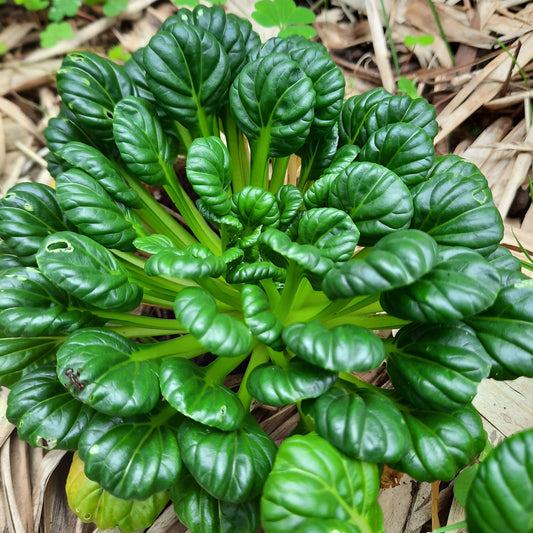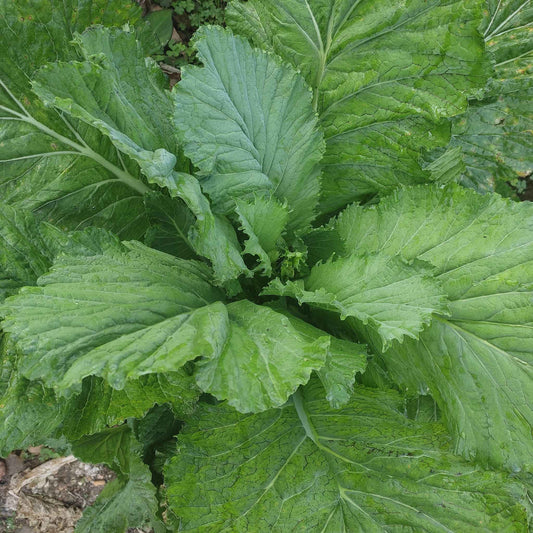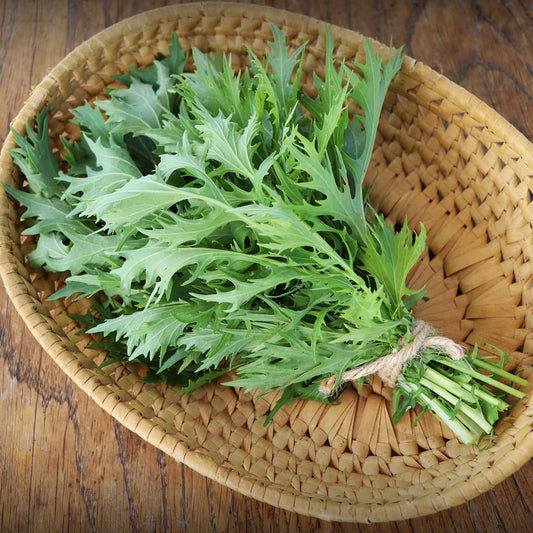-
main-collection-product-grid

Mustard Seeds - Old Fashioned
Delicious steamed or sauteed; also extremely popular eaten raw with saladMustard Seeds - Old Fashioned
Delicious steamed or sauteed; also extremely popular eaten raw with saladRegular price As Low As $4.99Regular priceUnit price per -
main-collection-product-grid

Microgreen Seeds - Microgreen Rainbow Blend
Small size packs a concentrated, nutritional punchMicrogreen Seeds - Microgreen Rainbow Blend
Small size packs a concentrated, nutritional punchRegular price As Low As $4.99Regular priceUnit price per -
main-collection-product-grid

Mustard Seeds - Tatsoi
Used in Asian cuisine, best flavor and nutritional value when eaten rawMustard Seeds - Tatsoi
Used in Asian cuisine, best flavor and nutritional value when eaten rawRegular price As Low As $4.99Regular priceUnit price per -
main-collection-product-grid

Mustard Seeds - Florida Broadleaf
A mild flavored, southern favoriteMustard Seeds - Florida Broadleaf
A mild flavored, southern favoriteRegular price As Low As $4.99Regular priceUnit price per -
main-collection-product-grid

Mustard Seeds - Tendergreen
Heat and drought resistant, great spinach substituteMustard Seeds - Tendergreen
Heat and drought resistant, great spinach substituteRegular price As Low As $4.99Regular priceUnit price per -
main-collection-product-grid

Mustard Seeds - Mizuna
Mildly sweet peppery leavesMustard Seeds - Mizuna
Mildly sweet peppery leavesRegular price As Low As $4.99Regular priceUnit price per -
main-collection-product-grid

Mustard Seeds - Southern Giant
Harvest young for salads, use in soups and stir fries as it maturesMustard Seeds - Southern Giant
Harvest young for salads, use in soups and stir fries as it maturesRegular price As Low As $4.99Regular priceUnit price per -
main-collection-product-grid

Mustard Seeds - Red Giant
Spicy and strong with a true mustard biteMustard Seeds - Red Giant
Spicy and strong with a true mustard biteRegular price As Low As $4.99Regular priceUnit price per -
main-collection-product-grid

Mustard Seeds (Organic) - Tendergreen
Known as Spinach Mustard, grows quickly in summerMustard Seeds (Organic) - Tendergreen
Known as Spinach Mustard, grows quickly in summerRegular price As Low As $6.99Regular priceUnit price per
Why mustard is essential to your vegetable garden
- 9 tasty mustard seed varieties
- Spicy, peppery leaves are easy to grow and quick to mature
- Cool-season brassica harvested in spring or fall
- A leafy, nutritious green rich in vitamins and antioxidants
The delicious flavor of mustard
Who doesn’t love mustard? The peppery, pungent condiment pairs well with so many dishes. But did you know that you can grow mustard in your own backyard? Mustard as we know it is actually made from mustard leaves, which is easily grown in your own garden!
A brassica, along with cabbage and kale, mustard is a cool-season crop. Hardy in planting zones 2 through 10, plant mustard seeds in spring or fall for dual harvests. Mustard is an easy to grow annual and fast-maturing crop, making this leafy green an excellent choice for vegetable gardens everywhere.
How to start mustard seeds at home
Mustard seeds can be direct seeded or started indoors. In the spring, direct sow mustard seeds three weeks before the last frost. Plant on starting a new succession of mustard every three weeks to keep a supply of young leaves close at hand. Older mustard plants are prone to bolt in the heat of summer. For a fall harvest, plant mustard seeds mid to late summer and pick greens up until the killing frost.
Choose a planting site in full or partial sun—mustard may actually benefit from some shade in hotter climates. Dig a furrow a half inch deep and multiseed. Space seed at six inch intervals for bushier plants, but mustard seeds can be swn closer together if you intend to harvest young leaves only. Fill in the trench and water the seeds in. Mustard seeds love consistent moisture, so keep the soil wet. Harvest mustard greens after one month, when the leaves are about four to six inches tall. For more bitter, spicy leaves, leave mustard leaves to mature a little longer.
Health benefits of mustard greens
Like all brassicas, mustard greens are a nutritional powerhouse. Rich in vitamins A, K, C and E, folic acid, calcium and fiber, incorporate mustard greens into your diet for healthier skin, bones, and heart. Enjoy baby mustard leaves raw in salads or added to sandwiches. Saute larger leaves to remove the bitter flavor, or throw chopped mustard greens in soups and stews to add a peppery taste. Some people even enjoy their mustard greens pickled!
Choose your favorite mustard variety
With varieties like sweet Mizuna, tangy Tatsoi, or the classic Old Fashioned, there’s a mustard variety to fit every plate and palette. Eden Brothers has seven mustard cultivars to choose from, and none will disappoint. For more information about planting, growing, and harvesting mustard seeds, see the Mustard Seeds Planting Guide.








